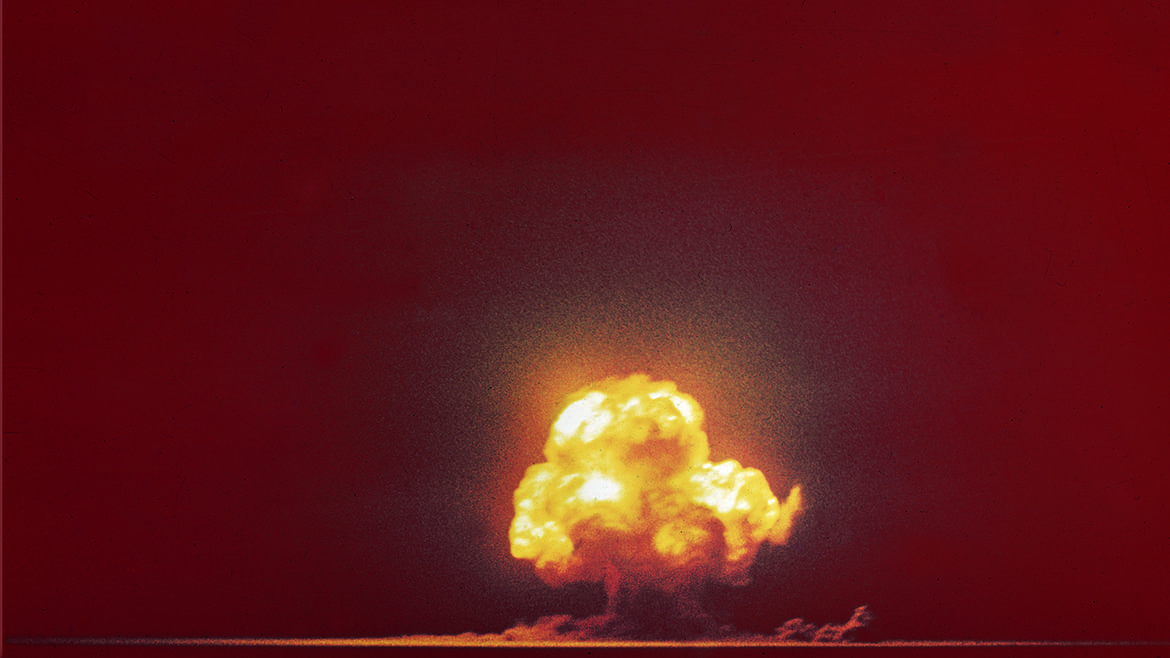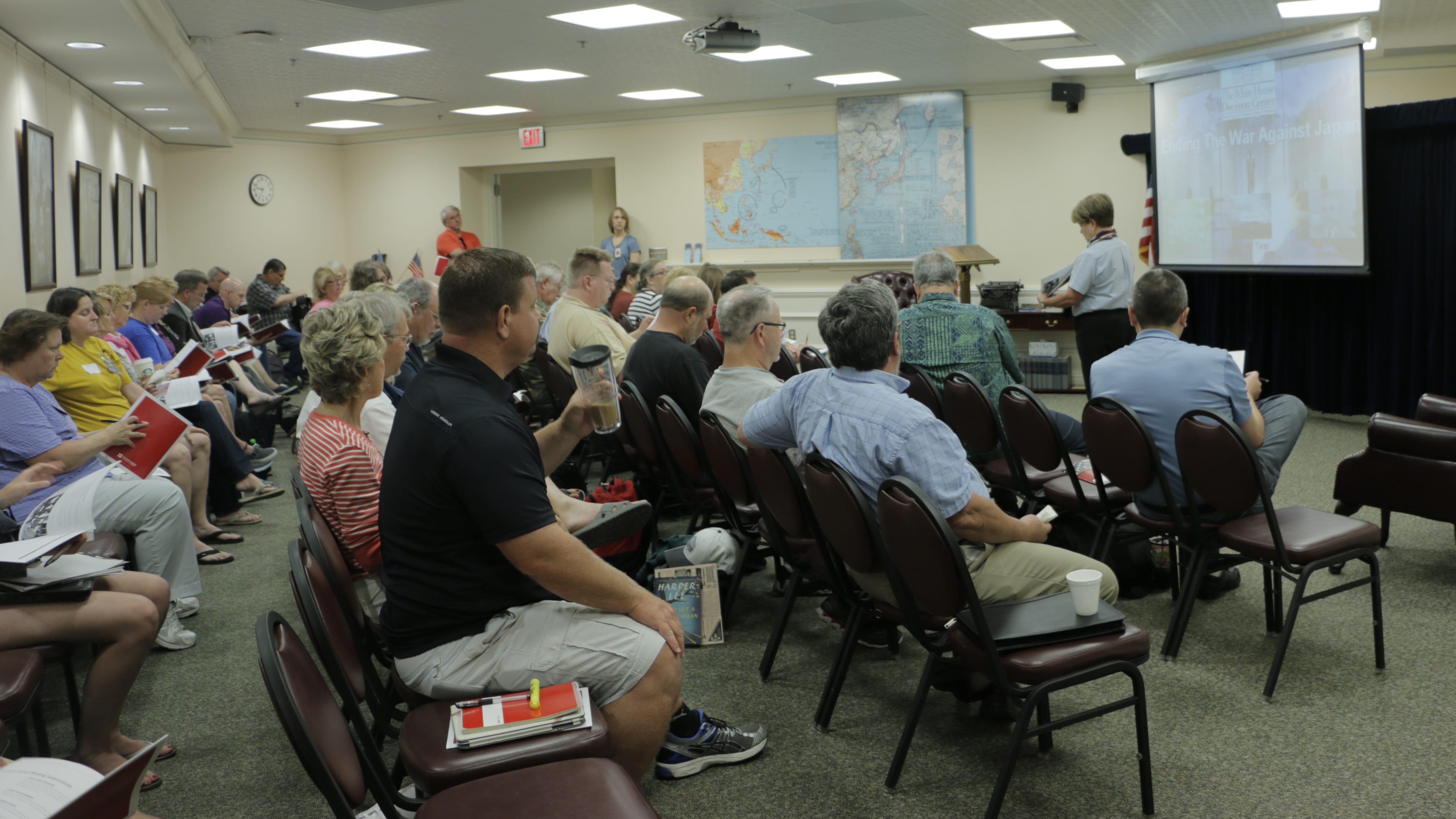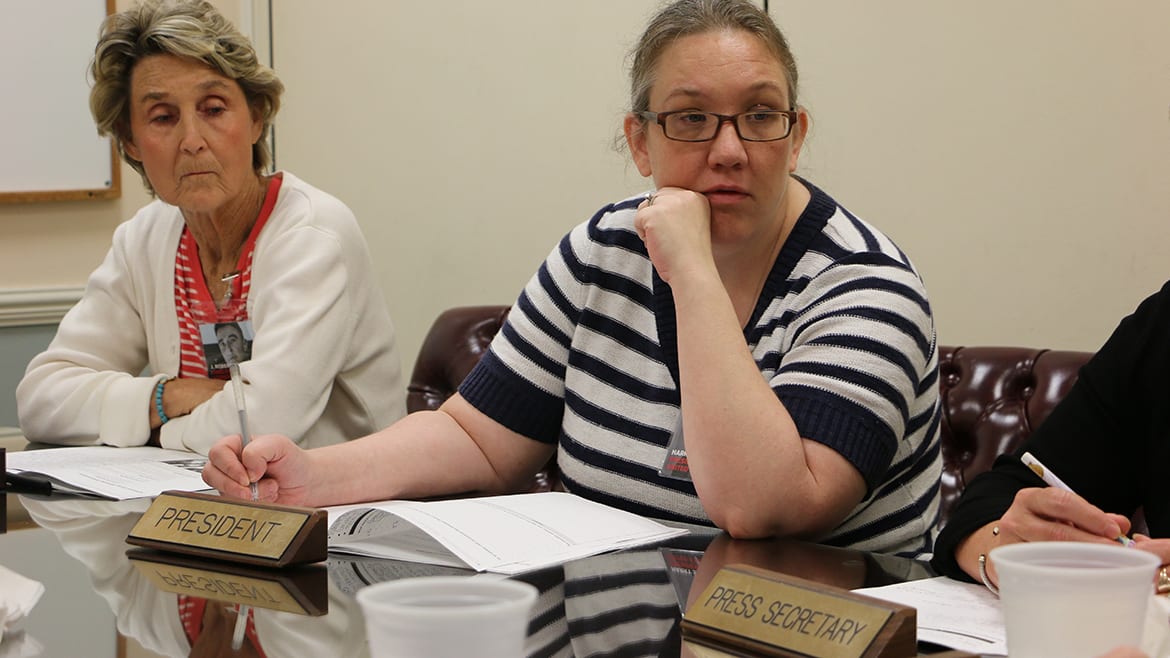Hands-on history: simulating the end of WWII at the Truman Museum
 The only existing color photo of the Trinity Test.
The only existing color photo of the Trinity Test.
Published July 16th, 2015 at 4:15 PM
The highlight of Joe Henke’s summers are his visits to the Harry S. Truman Library and Museum. Henke is a world history and honors government teacher from Boonville, Missouri and has participated in the museum’s weeklong Summer Teacher Institute for the last seven years.
This year on the eve of the 70th Anniversary of the Trinity Test, Henke and 48 other teachers from across the country took part in simulation of Truman’s options for ending WWII with Japan and the decision to use atomic weapons.
“You all will be the best and the brightest” said, White House Decision Center director Mary McMurray with a smile as she welcomed the group. “The fate of the free world in 1945 is in your hands.”
Designed to look like the West Wing, the White House Decision Center (WHDC) at the Truman Library immerses students and other visitors in some of the pivotal situations Truman faced during his presidency.
“It’s a unique opportunity to immerse yourself in history,” McMurry said. “You have to work as a team to create your own solution and respond to a major crisis ranging from ending the war with Japan, the Berlin Airlift, civil rights in the postwar military, the Korean conflict and our newest simulation, addressing the end of the British Mandate in Palestine.”
For today’s simulation each teacher is assigned one of eight roles ranging from President Truman to J. Robert Oppenheimer, who is often referred to as “the father of the atomic bomb.”
Using actual intelligence and primary documents from Truman Library’s collection, each team must brief its “President” on what they know, as well as the possible consequences of each response.
For example, the teachers assuming the role of Oppenheimer are able to preview the footage of the Trinity Test, before Truman or the other advisors.
“Putting on those badges and my staff exclusively calling them by their title all day, that puts you in the time and the place,” McMurray said. “(By) forcing you to engage with the time period and letting you negotiate with it helps you learn (history) in a deeper and more memorable way than it would just reading it from a textbook.”
After two hours working through various stages of the simulation, all eight President Trumans brief the rest of the group on their decisions.
“The majority opinion is usually to drop (at least one) bomb,” McMurray said “What changes for a lot of groups is how they do it, when and where they do it.”
For McMurray, the best days are those when students use the historical resources to create unique approaches as well as when students engage in ways that they perhaps can’t in the traditional classroom.
Recalling one simulation with a group of students from a Kansas City Public Schools, McMurray tears up.
“(This teacher) works with students who are all immigrants to the United States and he was standing in the back crying, so I asked what was wrong” McMurray said. “He said, ‘I’ve worked with this student for over two years and I’ve never heard her voice.’”
Kim Chamberlin taught for 32 years in Lee’s Summit and started bringing students to WHDC when it opened 15 years ago. In particular, she said that the WHDC a big confidence booster for her summer school students.
“These were a group of young people, the majority of whom had failed the first year of American history,” Chamberlin said. “Even though they were a little scared at first… they all stepped up to the plate and they loved it.”
Since retiring, Chamberlin devotes her time to taking students and other groups, like the educators in this year’s Summer Teacher Institute through the simulations.
“It just gives you new perspective on what you can bring to the classroom,” said Joe Henke after the simulation ended. “Each year I come, I develop more of a love of history.”
For this year’s Summer Teacher Institute, Truman Library Education Specialist Mark Adams helped participants delve into many aspects of 1945, including the role of baseball in postwar America. At the end of the week teachers create their own lesson plans, which are shared on the Truman Library’s website so educators across the country can access them.
Beginning this summer, the general public can also participate in the simulation as part of the Truman Museum’s WWII Weekends.
Create your own user feedback survey
Join KCPT and the Harry S. Truman Library and Museum July 23, 2015 at 6p.m. for a special advance screening of “The Bomb,” a new documentary from PBS that uses state-of-the-art techniques to turn recently declassified images into vivid, jaw-dropping footage to tell a powerful story of the most destructive invention in human history. More info here.




